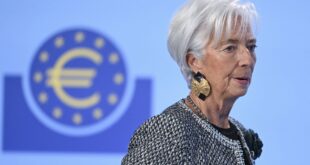Climate change is having an effect on one of Norway’s most important commodity markets – the fishing sector. Euronews Business looks at what steps are being taken to protect it.
The Norwegian fishing industry is feeling the effects of climate change.
Fishing is one of the most important sectors in Norway, with seafood exports touching a record high of NOK 172bn (€14.49bn) last year, a 14% rise from 2022 levels. In 2022, the seafood sector accounted for approximately 2.3% of the country’s gross domestic product (GDP).
Norway is also the world’s top salmon exporter. According to World’s Top Exports, the country’s chilled or fresh salmon exports came up to $8.6bn (€7.73bn) in 2023, which made up about 48.9% of the world’s salmon exports.
According to the website Seafood From Norway: “Norway wouldn’t be the country it is today were it not for a single fish – it all started with cod. The Norwegian Atlantic cod has meant the existence for people along the coast of Norway for thousands of years – not just as food, but also as trading goods.”
Climate change, however, is now a significant threat to this very important commodity.
How is climate change hitting Norway’s fishing sector?
One of the main ways that climate change is affecting Norway’s fishing industry is by reducing the numbers of boreal fish species such as Atlantic cod, Greenland halibut, redfish and pike.
Salmon numbers are also expected to be hit, as warmer waters mean that there are increased chances of parasites and diseases affecting the fish. Northern cod is another species seeing less juvenile fish surviving all the way into adulthood.
This could pose a problem for sustainable fishing as one of the practices of sustainable fishing involves allowing fish to grow into adulthood and reproduce before being caught, to ensure a good number of fish remain in the ocean.
Climate change also means that parts of southern Norway are now becoming increasingly unsuitable for species such as salmon, silver cod and sprat. They are now migrating more towards the northern regions.
As a result, fisheries in the southern areas are therefore likely to face financial losses and a decrease in business or even, potentially, closure.
Warmer waters also mean that an abundance of new species typically found further south are now being found along Norway’s coastline as well, which can disturb the local established marine ecosystem.
Other seafood species such as the Norwegian snow crab, are also sensitive to changes in temperature and usually require freezing waters to be able to survive until adulthood. They are found in the Barents Sea, as well as Svalbard, Alaska and parts of the Canadian and Russian Arctic.
However, due to climate change, species like the snow crab can no longer be fished in quantities needed for commercial fisheries, making it more difficult for businesses to reliably offer the product to customers.
Warmer temperatures also mean that some food species for smaller fish such as herring and capelin, like plankton, have reduced in numbers, or migrated to different areas, affecting these fish species as well.
How can Norway’s fishing sector be protected?
One of the best ways Norway’s fishing sector and marine ecosystem can be protected is through sustainable fishing.
The use of nets rather than bottom trawling or dredging allows fish and sea life populations to remain as balanced as possible, while providing enough food and business for fisheries for the long-term.
Other measures involve restricting overfishing and marine pollution. This can be through using better-quality boats, with fully electric or hybrid fuel technologies, thus reducing emissions.
Another way that Norway’s fishing sector can be protected in order to revitalise fish populations is by working to restore marine ecosystems and habitats. Extending marine-protected areas (MPAs) is also another way to ensure that marine ecosystems have enough time to recover from overfishing.
Some fisheries which were particularly hit by the Covid-19 pandemic may also be eligible for subsidies and funding support by both Norway and the EU.
The Norwegian government provides its own support for the fishing sector, including through building harbours and providing loans for fishing vessels.
 topnaijanews Stay informed with the latest Nigerian news at your fingertips
topnaijanews Stay informed with the latest Nigerian news at your fingertips
